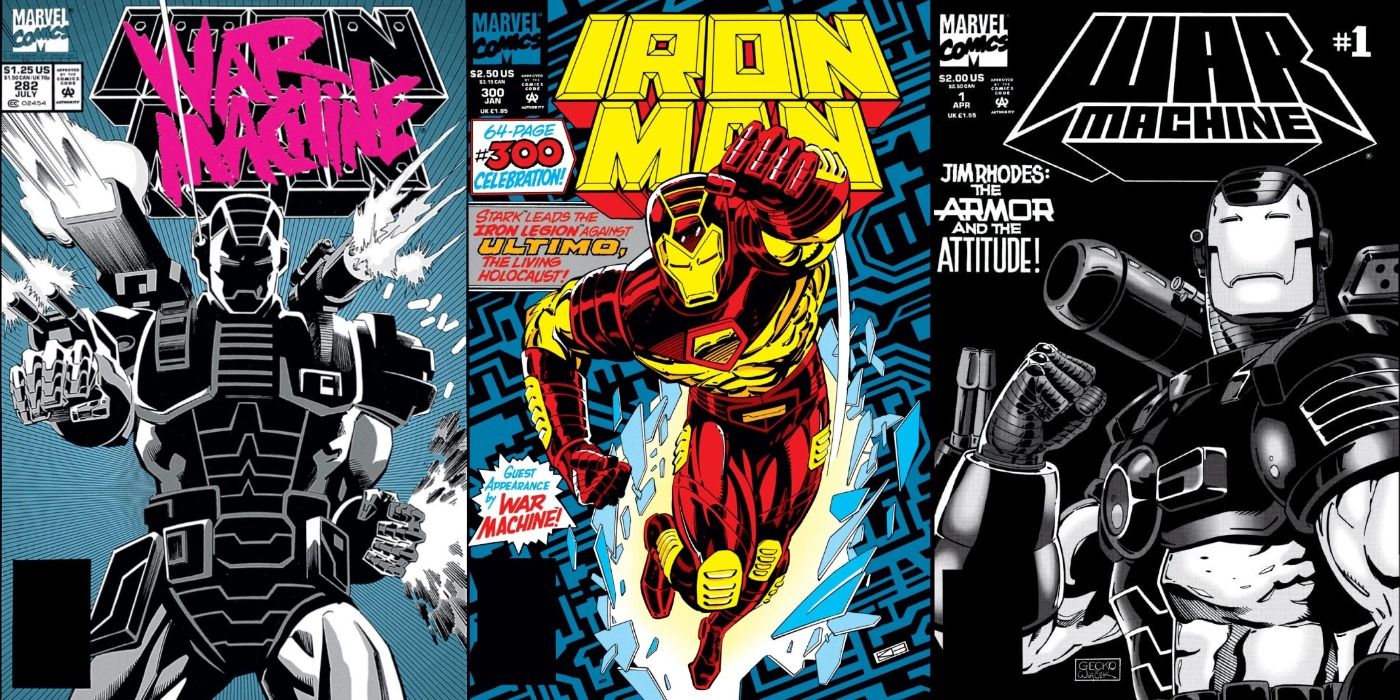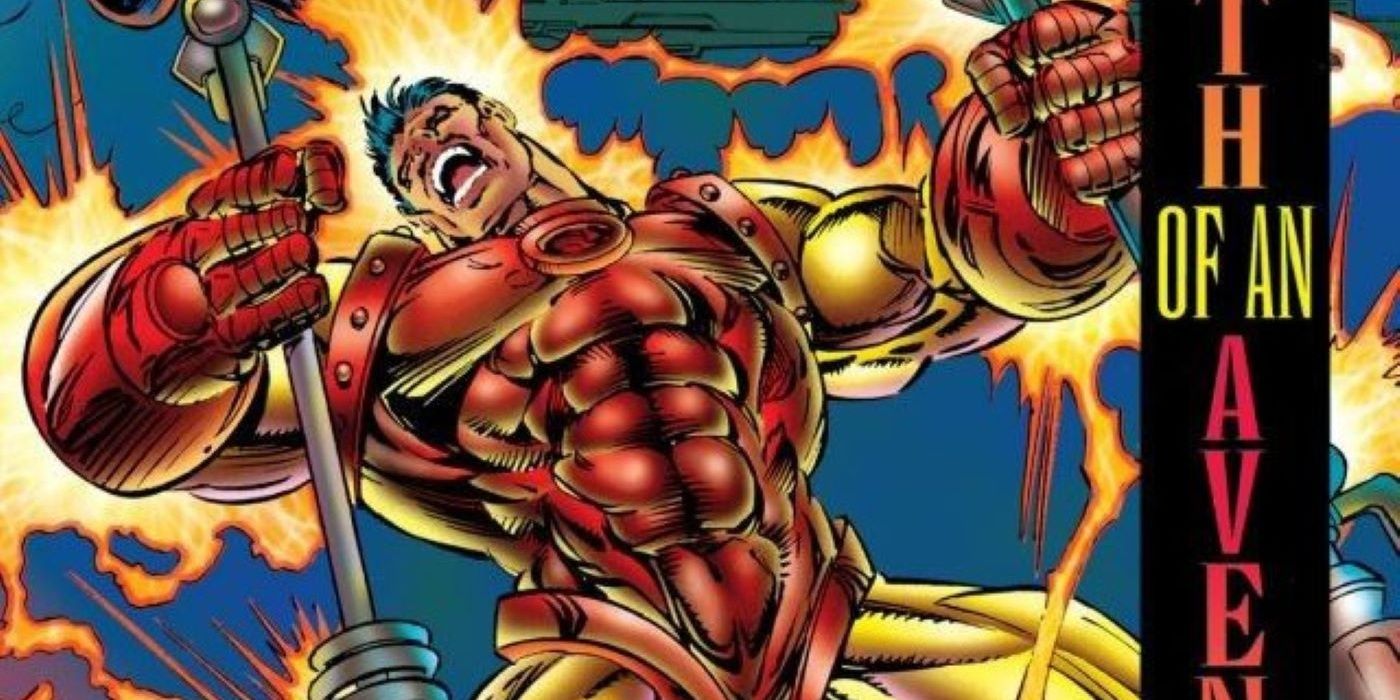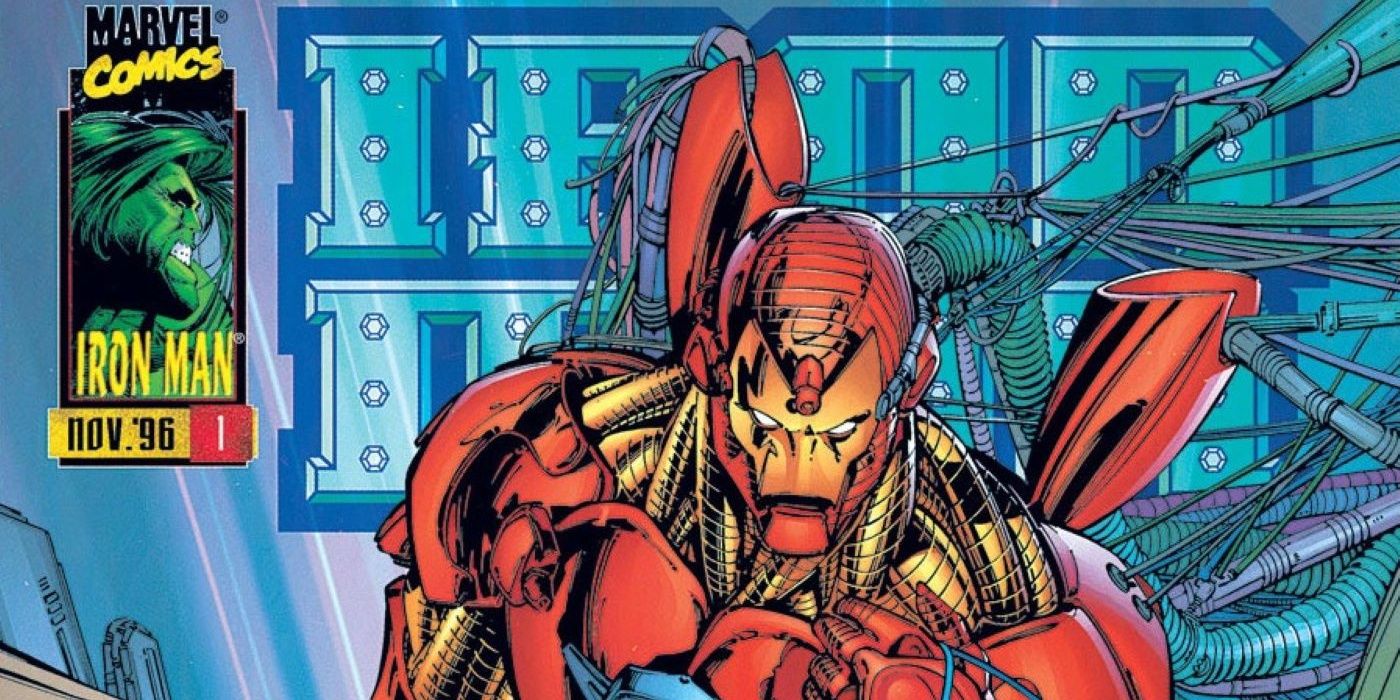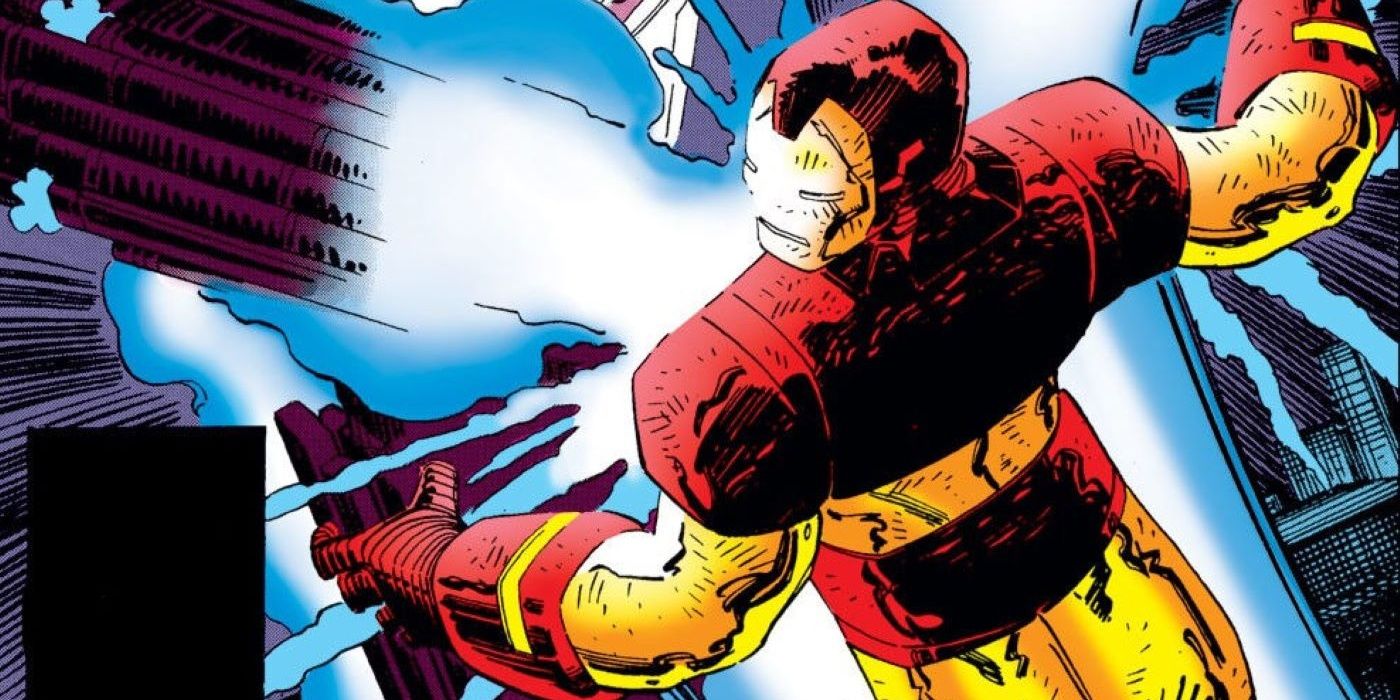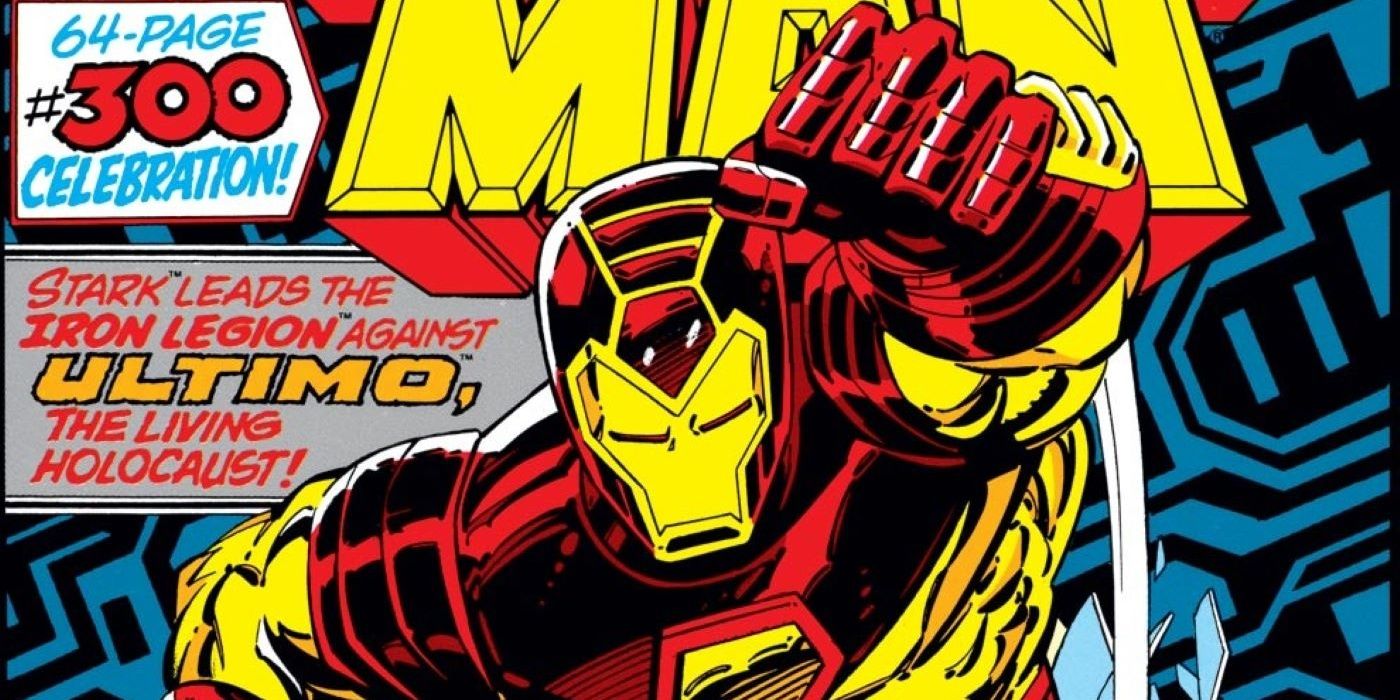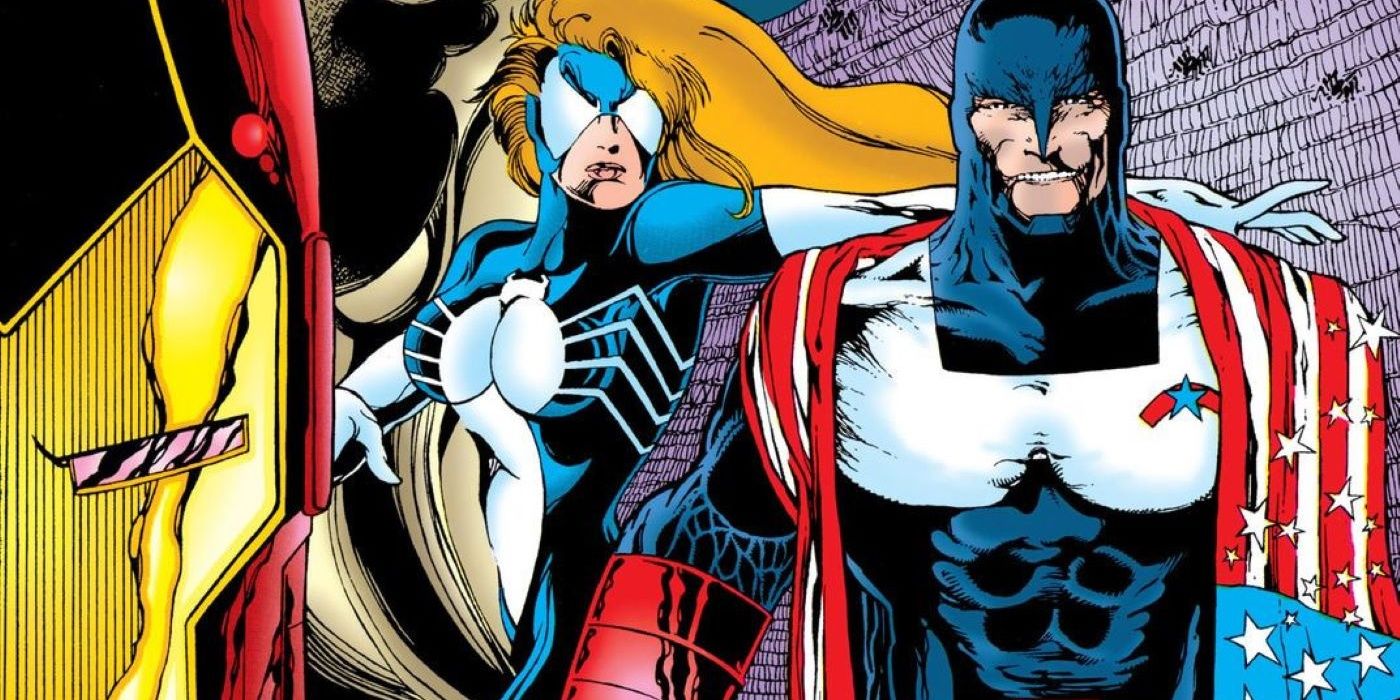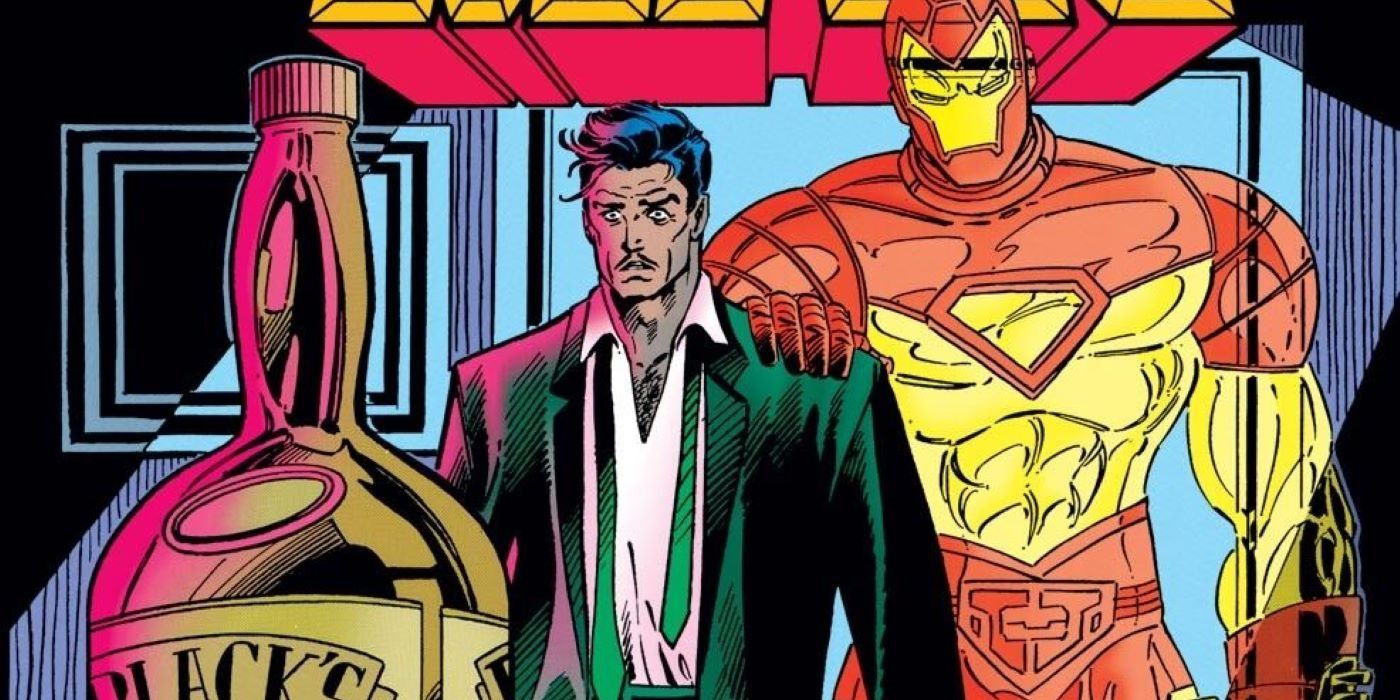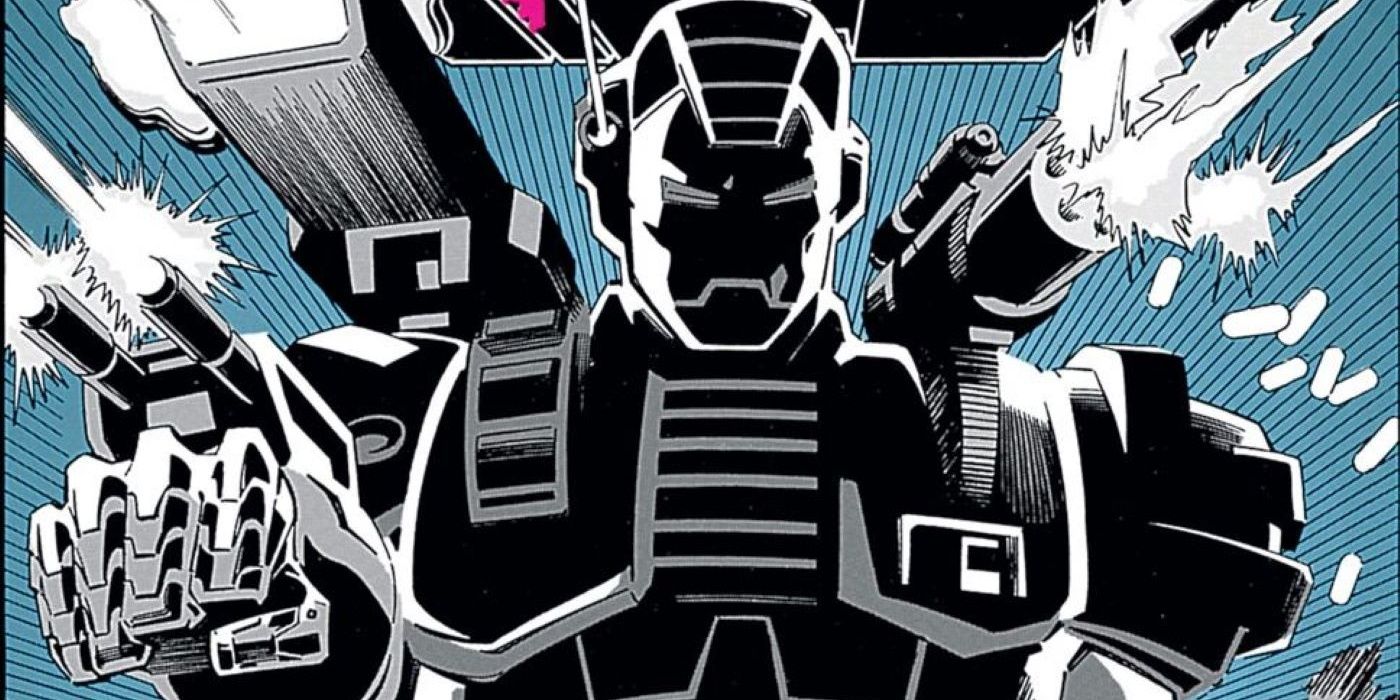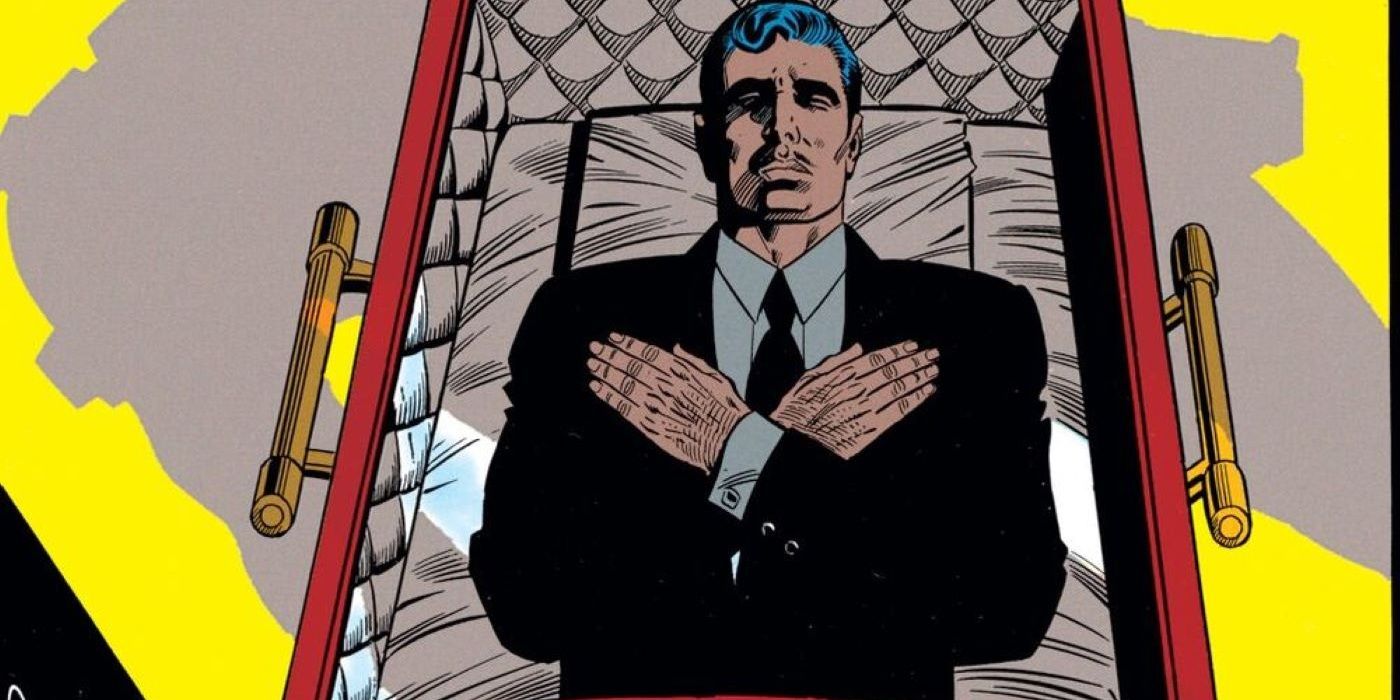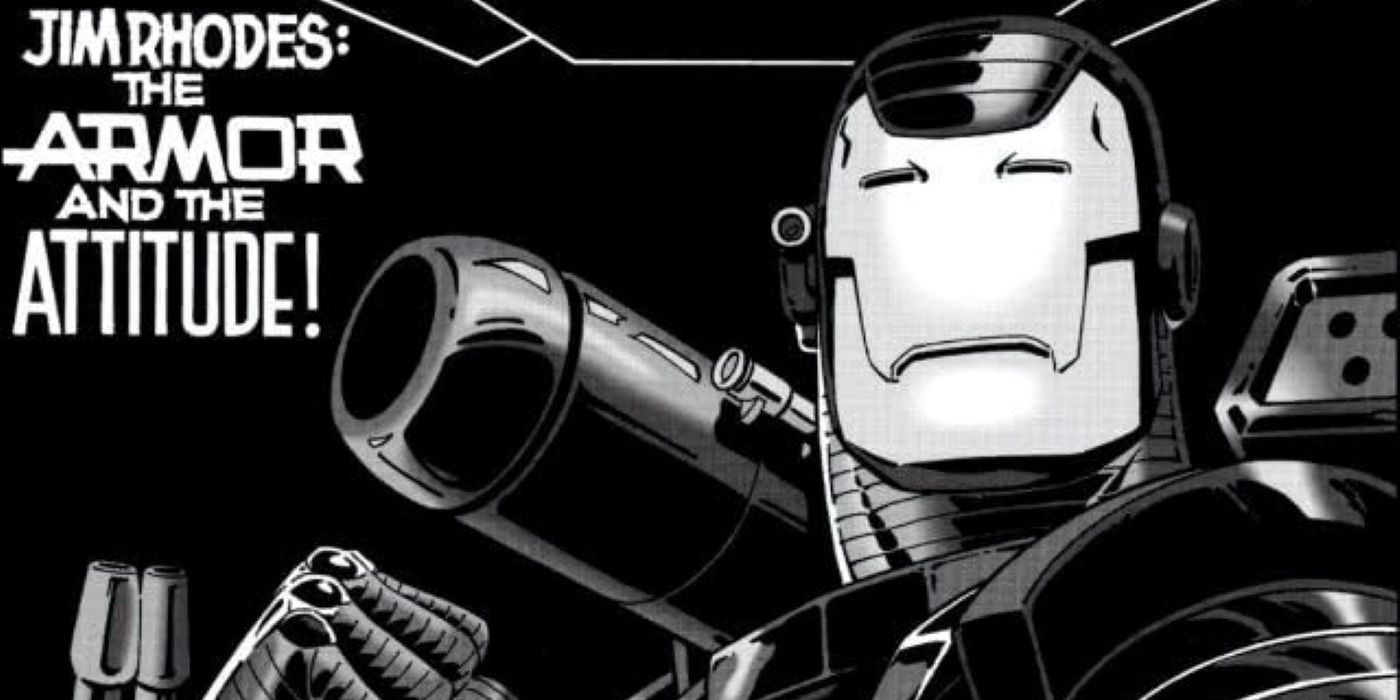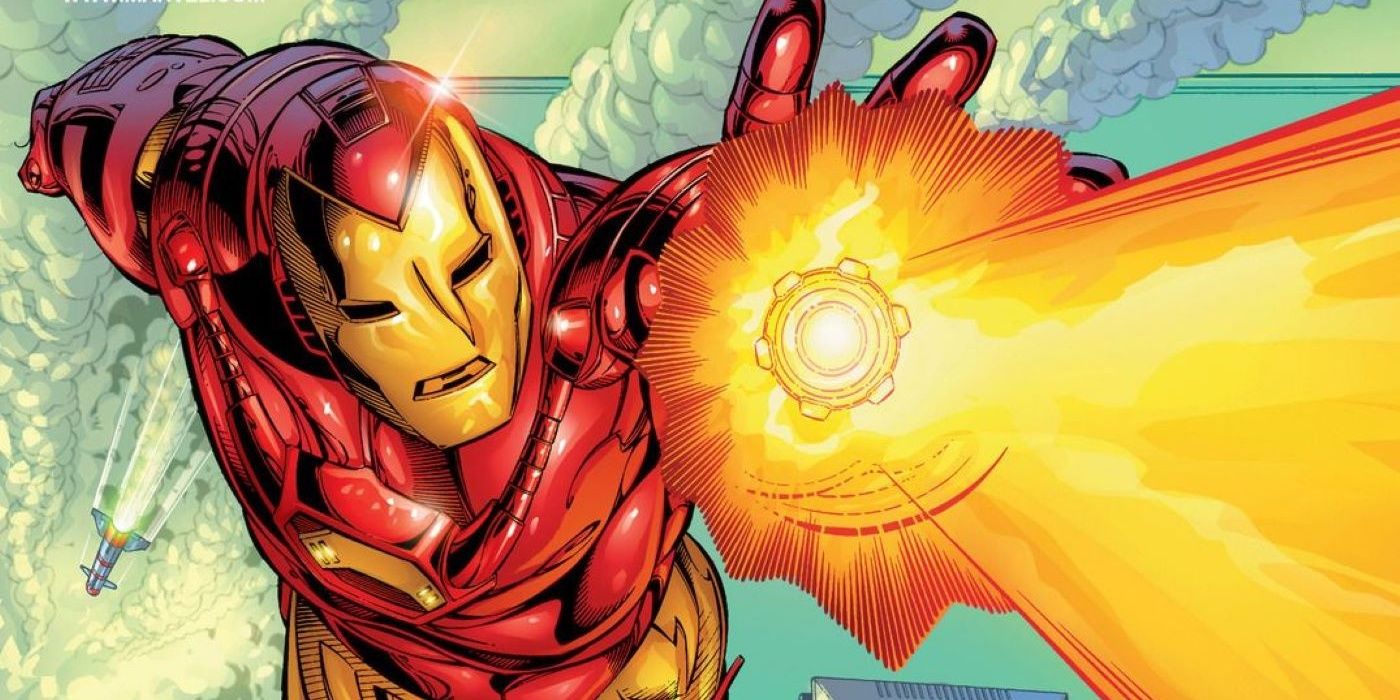Like most comics of the era, 1990s issues of Marvel's Iron Man can best be described with one word: extreme. Following the deconstruction and subsequent rebuilding of Tony Stark in the 1980s, the following decade would see even more radical changes to the character and his supporting cast.
As the first volume of the Iron Man comic, ongoing since 1968, was canceled, the 90s saw the armored Avenger's book relaunched twice in one decade. Further milestones included the debut of the Iron Man-led team book Force Works, and James Rhodes, the second Iron Man, finally escaping Tony Stark's shadow with a new identity: War Machine.
"Time's End" Avengers #395, 1995
When the time-traveling Immortus corrupts Tony Stark, the Avengers use an experimental time machine of Stark's design to recruit a past version of the hero to aid them. The storyline, called "The Crossing," is one of Iron Man's weirdest comic book arcs, but it was an undeniably ambitious attempt to refresh the character for new readers during the 90s comic book boom period.
Avengers #395 features the aftermath of the confrontation between the two Tonys and the death of the original. Following this issue, the new, teen Tony would take over the Iron Man comic, which evolved from a corporate drama into a tale of a wide-eyed teenage genius, not yet influenced by his adult triumphs and failures.
"Heart Of The Matter" Iron Man Vol. 2 #1, 1996
1996's "Onslaught" event culminated in the "deaths" of multiple classic Marvel heroes, including the Avengers and Fantastic Four. The afflicted heroes were then reborn in a new universe following this event, with the titles Captain America, Avengers, Fantastic Four, and Iron Man each canceled and relaunched with brand new first issues.
Iron Man vol. 2 #1 introduces this iteration of Tony Stark, with a new origin story tied to the origin of this world's Incredible Hulk. While Marvel's "Heroes Reborn" line divided fans, Iron Man, drawn by legendary artist and Image Comics co-founder Jim Lee, is visually stunning, representing his first Marvel Comics work in over four years.
"Retribution" Iron Man #266, 1991
More than five years after surrendering the armor back to the original, Jim Rhodes returns as Iron Man in a team-up with Tony Stark to battle corporate engineer Kearson DeWitt, who had built an armored suit of his own, becoming the villain Overlord. Featuring two Iron Men and drawn by John Romita Jr., Iron Man #266 validated a growing population of fandom who had come to see Rhodes as the better hero.
In the final part of the "Armor Wars II" event, "Retribution," written by John Byrne, also tested the waters for a potential permanent return of Rhodes as a full-fledged superhero. The triumphant return of Jim Rhodes had been teased a few times up to this point but became unavoidable following the success of this story.
"Appetite For Destruction" Iron Man #300, 1994
In the primary story of a massive 64-page anniversary issue, "Appetite for Destruction" features Tony Stark for the first time donning his "modular armor," which would become his primary suit of the 1990s, and the one featured in the 1994 Iron Man animated series. Prior to this, Stark had spent the early 90s utilizing a remote-controlled armor, and it was a celebrated event to have him once again inside the suit.
Battling the titanic Ultimo, Tony is aided by a half dozen of Iron Man's closest friends and allies, who don previous models of the superhero's armor to become the Iron Legion. While the team was short-lived, it was a suitable adventure for the series' milestone 300th issue, celebrating the past while setting up the future to come.
"Day-Break" Force Works #1, 1994
The 1990s saw a number of Marvel Comics retooled and relaunched as more "extreme" versions of themselves, including long-running titles such as X-Factor and The New Mutants, which became the hard-edged mutant team X-Force. After a decade of publication, Avengers West Coast was canceled and rebranded in the same vein, retitled Force Works.
Led by Iron Man, this new team included former AWC members Scarlet Witch, US Agent, and Spider-Woman, who were joined by the newcomer Century. Written by Dan Abnett and Andy Lanning, future superstars and architects of the critically acclaimed "Annihilation" storyline, the Avenger Wonder Man was killed off in the first issue, setting the tone for the new series and radically differentiating it from its more tam and traditional predecessor.
"Resolutions" Iron Man #313, 1995
A "quiet" issue centered around Tony Stark's visit to an Alcoholics Anonymous meeting on New Year's Eve, "Resolutions" recounts the hero's past troubles with alcohol and attempts at sobriety. Recounting milestone events such as "Demon in a Bottle," it further peels back the curtain to reveal for the first time Tony's origins with alcohol abuse, beginning before he was even a teenager.
Stark's battles with alcoholism have been an important aspect of the character for years but often played as an ancillary struggle against a larger conflict of supervillains and high-stakes business affairs. Iron Man #313, however, features no costumes or villains, except in flashbacks. Instead, Tony's most personal battle is laid bare, reminding readers that the genius billionaire philanthropist is in fact just a man.
"War Machine" Iron Man #282, 1992
Facing a corporate takeover facilitated by industrialist Justin Hammer and backed by Hydra and The Hand, Tony Stark encountered a cadre of villains equipped with technology that made them impervious to his trademark repulsors and uni-beams.
To combat this threat, he developed the Variable Threat Response Battlesuit, a heavily armored Iron Man suit nicknamed the War Machine. Iron Man #282 features the debut of this iconic armor, but as most know, Tony Stark would not become its most known wearer.
"Legacy Of Iron" Iron Man #284, 1992
Following Tony Stark's apparent death, Jim Rhodes would assume the position of CEO of Stark Enterprises and, wielding an upgraded version of the recently designed War Machine armor, becomes Iron Man once again. Much more seasoned than in his first tenure, this time around Rhodes is confident in his abilities and more than willing to resume the role.
Part tribute to the departed Stark and part ushering in the return of the fan-favorite Rhodes, Iron Man #284 contains something for every type of Iron Man fan. Rhodes' return to the armor had been long-awaited, but Stark's true status, cryogenically frozen and not actually deceased, set up his inevitable return down the line.
"Something To Believe In" War Machine #1, 1994
When Tony Stark, previously thought deceased, is revealed to have faked his death and frozen himself in order to heal his mounting injuries, a wedge develops between him and his longtime friend James Rhodes, who had inherited the Iron Man identity and leadership of Stark's businesses in his absence. Reeling from the perceived betrayal, Rhodes departed from the Iron Man comic and was spun off into his own series with a new identity: War Machine.
The first issue of the new series returns Rhodes to his roots in the United States Marine Corps, accepting missions from the armed forces requiring his tactical expertise and unparalleled firepower. Finally free from Stark's shadow, War Machine vol. 1 was highly anticipated and finally established a unique identity for James Rhodes following years of proving himself worthy while standing in for his predecessor.
"Looking Forward" Iron Man Vol. 3 #1, 1997
"Heroes Reborn" reimagined many of Marvel's most famous characters in a new reality, but it was always intended to be a temporary departure. Following a year of stories contained within a separate universe, they were reintegrated into the mainstream Marvel Universe in an event called "Heroes Return," which culminated in a series of relaunches, including the third volume of Iron Man.
Once again occupying Marvel's original reality, Tony picked up where he left off, but his absence did not go unmentioned. In a callback to his origin, Stark used the cover story that he had once again been kidnapped by terrorists to explain his absence. From there, he set about rebuilding, facing a world that had presumed him deceased and divided up his businesses and assets in his absence. As Tony began to rebuild his life, readers of the relaunched Iron Man comic experienced the same sense of tabula rasa. Marvel's heroes had returned, but the world they returned to had changed significantly in their absence.

